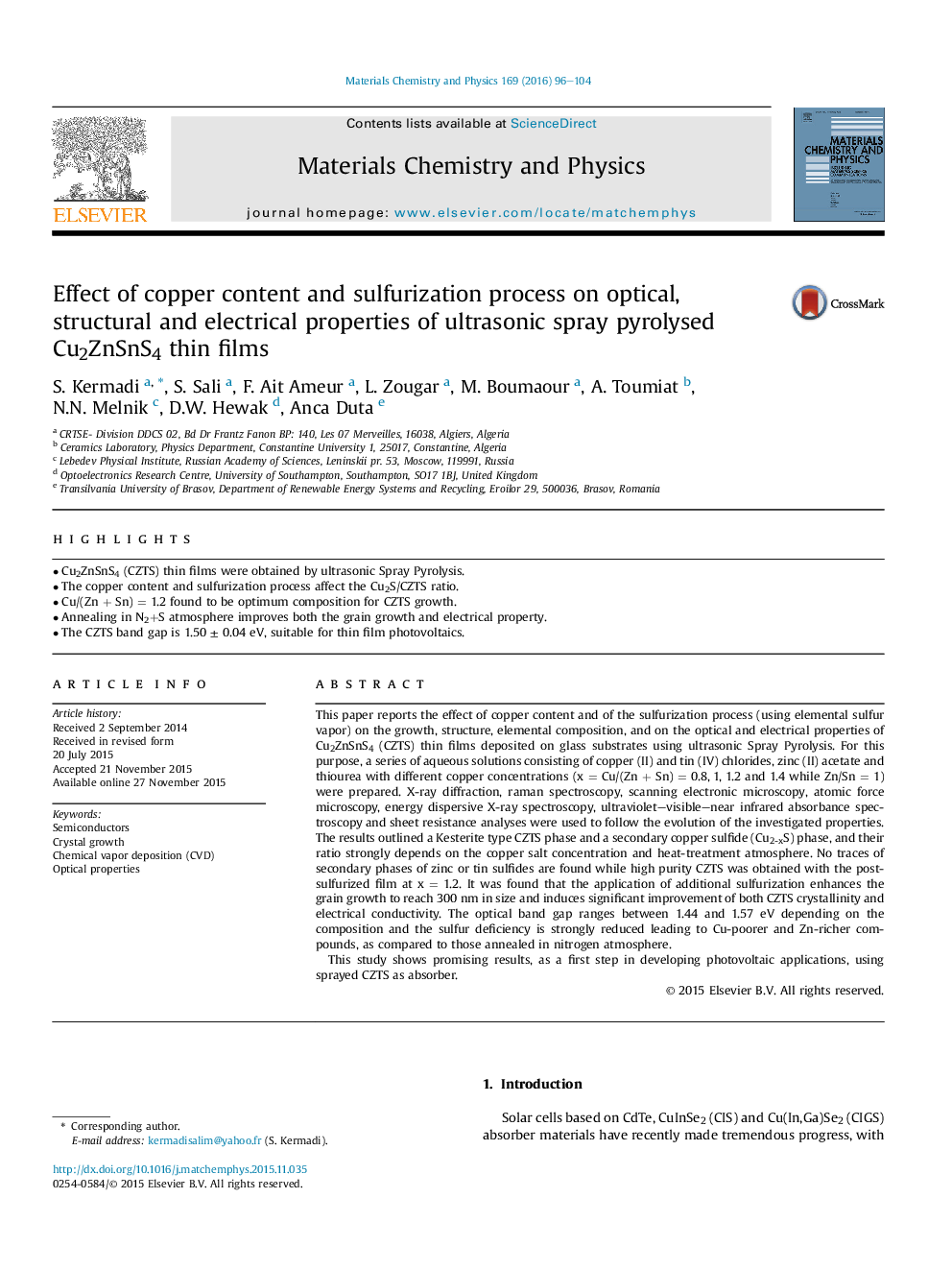| Article ID | Journal | Published Year | Pages | File Type |
|---|---|---|---|---|
| 1521033 | Materials Chemistry and Physics | 2016 | 9 Pages |
•Cu2ZnSnS4 (CZTS) thin films were obtained by ultrasonic Spray Pyrolysis.•The copper content and sulfurization process affect the Cu2S/CZTS ratio.•Cu/(Zn + Sn) = 1.2 found to be optimum composition for CZTS growth.•Annealing in N2+S atmosphere improves both the grain growth and electrical property.•The CZTS band gap is 1.50 ± 0.04 eV, suitable for thin film photovoltaics.
This paper reports the effect of copper content and of the sulfurization process (using elemental sulfur vapor) on the growth, structure, elemental composition, and on the optical and electrical properties of Cu2ZnSnS4 (CZTS) thin films deposited on glass substrates using ultrasonic Spray Pyrolysis. For this purpose, a series of aqueous solutions consisting of copper (II) and tin (IV) chlorides, zinc (II) acetate and thiourea with different copper concentrations (x = Cu/(Zn + Sn) = 0.8, 1, 1.2 and 1.4 while Zn/Sn = 1) were prepared. X-ray diffraction, raman spectroscopy, scanning electronic microscopy, atomic force microscopy, energy dispersive X-ray spectroscopy, ultraviolet–visible–near infrared absorbance spectroscopy and sheet resistance analyses were used to follow the evolution of the investigated properties. The results outlined a Kesterite type CZTS phase and a secondary copper sulfide (Cu2-xS) phase, and their ratio strongly depends on the copper salt concentration and heat-treatment atmosphere. No traces of secondary phases of zinc or tin sulfides are found while high purity CZTS was obtained with the post-sulfurized film at x = 1.2. It was found that the application of additional sulfurization enhances the grain growth to reach 300 nm in size and induces significant improvement of both CZTS crystallinity and electrical conductivity. The optical band gap ranges between 1.44 and 1.57 eV depending on the composition and the sulfur deficiency is strongly reduced leading to Cu-poorer and Zn-richer compounds, as compared to those annealed in nitrogen atmosphere.This study shows promising results, as a first step in developing photovoltaic applications, using sprayed CZTS as absorber.
